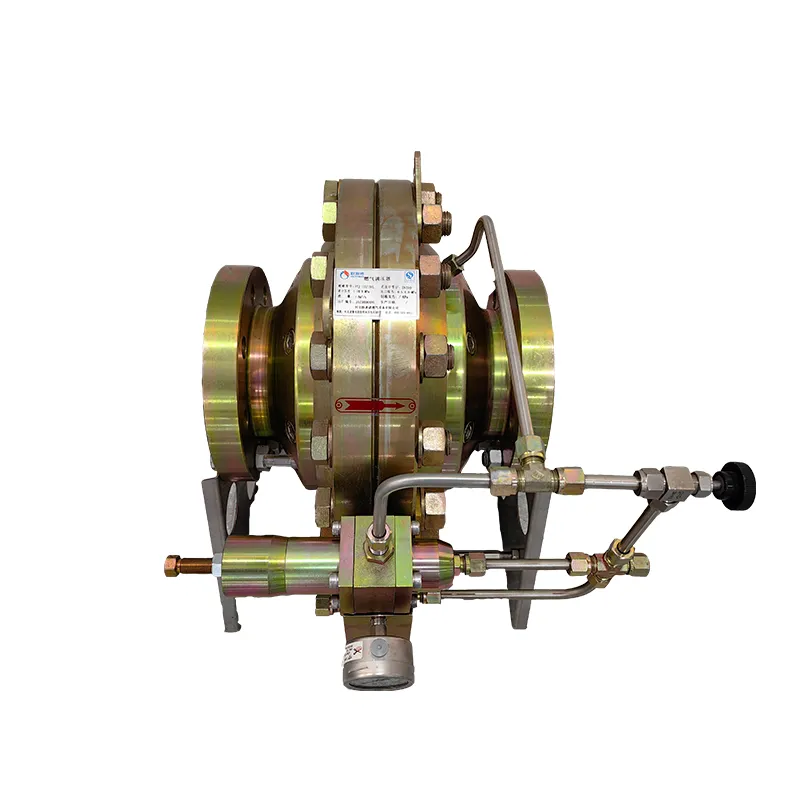
Oct . 02, 2024 15:21
Back to list
Natural Gas Pressure Regulation Facility for Safe Distribution and Usage
Understanding Natural Gas Pressure Reducing Stations
Natural gas is a vital energy source that fuels our homes, businesses, and industries. It is delivered through an intricate network of pipelines, ensuring that consumers receive a steady supply. However, high-pressure gas from transmission lines must be reduced to a safe, usable pressure before it reaches end-users. This is achieved through a specialized facility known as a Natural Gas Pressure Reducing Station (PRDS).
What is a Pressure Reducing Station?
A Natural Gas Pressure Reducing Station is designed to lower the pressure of natural gas from high to low levels before distribution. These stations are critical components within the natural gas infrastructure, located at key points throughout a pipeline system. The primary function of a PRDS is to ensure that gas pressure is appropriate for safe consumption by residential, commercial, and industrial users.
The Importance of Pressure Regulation
High-pressure natural gas travels through transmission pipelines at pressures that can exceed 1,000 psi (pounds per square inch). If this gas were delivered directly to end-users, it could cause significant safety hazards, damaging appliances and risking explosions. Thus, reducing the pressure is essential for safe consumption.
Moreover, maintaining appropriate pressure levels is crucial for efficiency and reliability. Too high or too low a pressure can disrupt the supply, leading to service interruptions. PRDS systems help provide consistent and reliable pressure levels, optimizing the distribution network’s performance.
Components of a Pressure Reducing Station
A typical natural gas pressure reducing station includes several key components
natural gas pressure reducing station

1. Pressure Regulators These are the heart of the station. They automatically adjust the flow of natural gas to maintain a desired output pressure.
2. Safety Devices Emergency shut-off valves and pressure relief valves are included to prevent overpressure conditions. These safety mechanisms are vital for ensuring the station’s operation remains within safe limits.
3. Filtration Systems To protect downstream equipment, filtration systems remove particulate matter from the gas, ensuring clean gas delivery.
4. Measurement Equipment Pressure gauges and flow meters allow for continuous monitoring of gas flow and pressure levels, providing operators with real-time data.
5. Control Systems Automated control systems monitor gas pressure and flow, making adjustments as necessary to maintain safe and adequate supply.
Operation and Maintenance
Pressure reducing stations are typically manned or monitored remotely. Operators must conduct regular inspections and maintenance to ensure that all components function correctly. This includes checking the regulators for wear, testing emergency shut-off valves, and cleaning filters. Proper maintenance not only extends the lifespan of the equipment but also ensures the safety and reliability of the natural gas supply.
Conclusion
Natural Gas Pressure Reducing Stations are essential infrastructures that enable the safe distribution of natural gas. By reducing high-pressure gas to levels suitable for consumers, these stations play a crucial role in the overall natural gas supply chain. As demands for energy continue to rise, ensuring the reliability and safety of these stations becomes increasingly important. Investment in new technologies and maintenance practices will be vital for the continued efficiency of natural gas distribution in the future.
Next:
Latest news
-
Safety Valve Spring-Loaded Design Overpressure ProtectionNewsJul.25,2025
-
Precision Voltage Regulator AC5 Accuracy Grade PerformanceNewsJul.25,2025
-
Natural Gas Pressure Regulating Skid Industrial Pipeline ApplicationsNewsJul.25,2025
-
Natural Gas Filter Stainless Steel Mesh Element DesignNewsJul.25,2025
-
Gas Pressure Regulator Valve Direct-Acting Spring-Loaded DesignNewsJul.25,2025
-
Decompression Equipment Multi-Stage Heat Exchange System DesignNewsJul.25,2025

